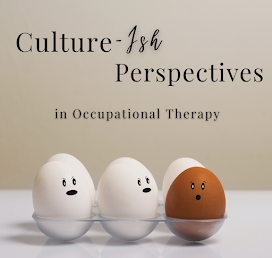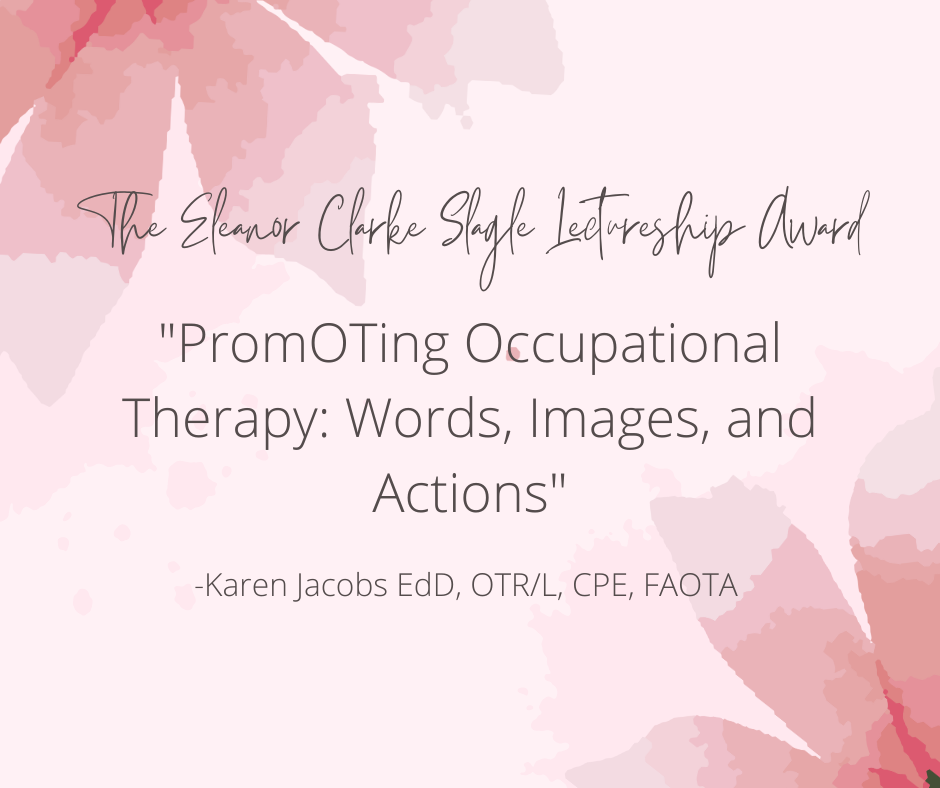Culture-Ish Perspectives in Occupational Therapy
Growing up, I always knew I was different from the rest of my class, especially in the south. My whole life I have been attending schools that were predominately white with little to no diversity. I have even experienced ethnocentrism, which is the belief that one's own culture is superior to others and is the standard by which all other people be judged (Hammell, 2013). Having to deal with being a different person, whether it be the color of my skin or my beliefs, I have understood from a young age that not everyone comes from the same background. The older I get, the more I realize how the melting pot of different cultures and beliefs comes into play within occupations, especially in healthcare. The article "Occupation, well-being, and culture: Theory and cultural humility" by Karen Hammell, made me realize how important it is to consider the concept of culture and differences, especially within one's occupation. Hammell highlights the specific dimensions of cultural diversity and how they relate to occupational engagement and well-being. These specific dimensions include well-being, cultural humility, positioning, and differences within race, class, gender, sexuality, and ability (Hamnmell, 2013).
As I mentioned before, being from a different culture that isn't a part of the dominant culture where I live, has made me realize that culture impacts our occupations in many ways. Culture is defined as the knowledge, beliefs, values, assumptions, perspectives, attitudes, norms, and customs that people acquire through membership in a particular society or group (Hammell, 2013). We have been learning about the Occupational Therapy Practice Framework in our class, which is a document that provides a structure for occupational therapy practice. Within the OT Practice Framework, there are two scopes of practice: Domain and Process. The different dimensions I mentioned before all relate to the framework and are categorized within personal and environmental factors (AOTA, 2020).
Personal factors, which fall under the domain category of the OTPF-4's scope of practice, are the unique features of a person that are not part of a health condition or health state and these include customs, beliefs, activity patterns, behavioral standards, as well as expectations accepted by the society or cultural group of which a person is a member (AOTA, 2020). A person's culture can compact their daily occupations and routines in many ways. As a woman who believes in and practices the Hindu religion, I grew up with certain beliefs and practices that I follow on a daily basis as well as observing special holidays. If I did not practice these beliefs from my culture, I would not consider them important in my occupations or routines and would not be as aware of others' beliefs either.
An occupational therapy practitioner can use the cultural information of a client to inform their treatment goals and interventions by understanding where they are coming from. Looking at a client holistically and truly asking them what matters most to them will help the client trust the practitioner and allow the practitioner to consider interventions that will connect with the client's culture. Instead of seeing clients as "different" from the cultural norms of the therapist themselves, cultural humility recognizes the cultural differences that lie within the therapist-client relationship (Hammell, 2013). Since I grew up with a Hindu background, I was very unfamiliar with Christianity and the beliefs within that culture. I was always viewed as someone that was different and would be forced to go to events with my classmates that involved the community church. I always felt like an outcast because I never knew what certain bible scriptures were. I even had classmates force me into reading the bible with them during class and then I realized that that isn't normal. As I have gotten older, I have realized that since I grew up in the south, most people were taught to spread their religion to others. However, when you're young and go to a school with predominantly white people, I felt guilty for being different. This experience still sticks with me and made me believe in inclusivity. Even though I am not an occupational therapy practitioner yet, this experience helps me understand to ask questions and help clients, and people in general, to feel included no matter what. Using a client-centered approach would help me as a future OT practitioner to gather information and understand what is currently important and meaningful to the client (AOTA, 2020). This will also help the client be actively engaged in sessions and help achieve a successful end result.
The term cultural competence has been used within this profession quite often, however, it has been replaced by a new term known as cultural humility. Hammell mentions within the article that cultural competence tends to assume that the therapist is from a dominant culture and that the client is not, which would be an assumption they would challenge. However, cultural humility emphasizes cultural differences within the client-therapist relationship without assuming the other's culture. Cultural humility is preferred over the term cultural competence in the OT profession as we move towards greater cultural responsiveness in caring for our clients. I have had experiences where people tend to assume my religion is either Hinduism or Islam, especially as soon as they look at my name and skin color. This also goes back to another dimension Hammell mentioned, race. This would fall into cultural competence because someone assumed what my religion was just because of the color of my skin and my different background. Since we are adapting the term cultural humility, it should be practiced to refrain from assuming the different cultures until it has been stated.
In conclusion, we have learned that within the OTPF-4 and this article that culture itself has a big impact on people whether it be one's routine or one's beliefs. Inclusivity will always be the bigger picture in understanding a person from a different background. As I have mentioned before, to have active participation with a client, one must set aside cultural differences and practice cultural humility. My experiences of coming from a different background than the predominant one in the south have helped me understand the differences in other people's beliefs. It will be my duty as a future OT practitioner to continue to build on that and make sure my future clients feel comfortable enough to trust me as well as put aside our differences within the dimensions of cultural diversity.
American Occupational Therapy Association. (2020, August 31). Occupational therapy practice framework: Domain and process-fourth edition. American Occupational Therapy Association. Retrieved February 28, 2023, from https://research.aota.org/ajot/article/74/Supplement_2/7412410010p1/8382/Occupational-Therapy-Practice-Framework-Domain-and
Hammell, K. R. (2013). Occupation, well-being, and culture: Theory and cultural humility / occupation, Bien-être et culture : La Théorie et l’humilité culturelle. Canadian Journal of Occupational Therapy, 80(4), 224–234. https://doi.org/10.1177/0008417413500465




Comments
Post a Comment